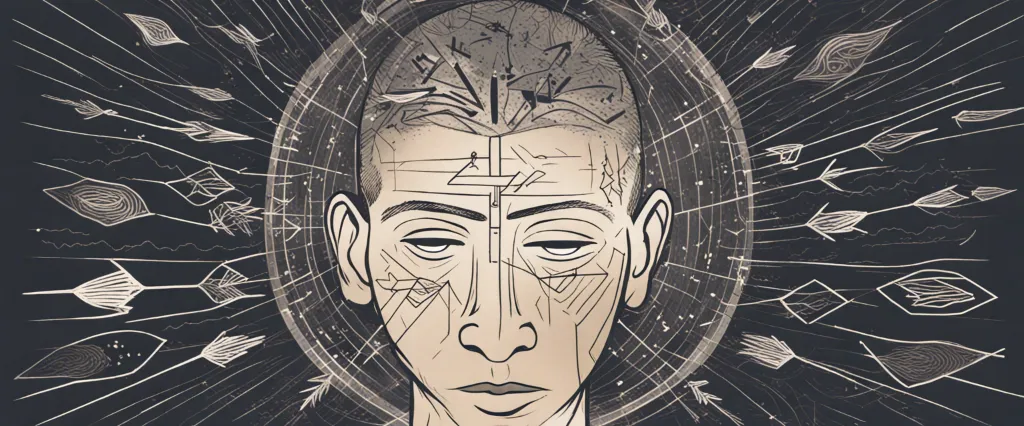——The LifeChanging Magic of Tidying Up by Marie Kond & Think Like a Monk by Jay Shetty

In a world filled with chaos and distractions, many individuals seek guidance on how to declutter their minds and living spaces in order to find peace and purpose. Two notable authors, Marie Kondo and Jay Shetty, have provided readers with invaluable insights and practical advice through their best-selling books, “The Life-Changing Magic of Tidying Up” and “Think Like a Monk” respectively. While both authors address the importance of living a more intentional and mindful life, their approaches and perspectives differ greatly. By undertaking a comparative study of these landmark works, we aim to explore the similarities, differences, and unique contributions of Kondo and Shetty’s ideologies, ultimately uncovering the paths they offer for individuals striving to achieve personal transformation and inner tranquility. Through their distinctive lenses, these authors shed light on how tidying up our physical surroundings and adopting a monk-like mindset can lead to profound shifts in our mental, emotional, and spiritual well-being. Join us as we embark on this enlightening journey, delving into the principles, strategies, and wisdom embedded within “The Life-Changing Magic of Tidying Up” and “Think Like a Monk,” navigating towards a life of purpose, joy, and lasting fulfillment.
Brief Summary of Two Books
The LifeChanging Magic of Tidying Up by Marie Kond
“The Life-Changing Magic of Tidying Up” by Marie Kondo is a self-help book that presents the KonMari method of decluttering and organizing. Marie Kondo, a renowned Japanese cleaning consultant, outlines a unique approach to tidying up that promises to bring joy and transform one’s life.
The book begins by exploring the importance of tidying and decluttering, emphasizing the positive impact it can have on our mental, emotional, and physical well-being. Kondo introduces the concept of keeping only items that “spark joy” and discarding the rest, guiding readers towards a clearer understanding of what truly brings happiness.
The author provides detailed instructions on the step-by-step process of decluttering, encouraging readers to organize their belongings by category rather than by room. Kondo emphasizes the importance of respecting our possessions and expressing gratitude for their contributions to our lives, even as we let go of them.
Throughout the book, Kondo shares personal anecdotes and insights based on her experiences as a professional organizer. She addresses common obstacles and offers practical solutions to deal with sentimental items, maintaining organization in the long run, and involving family members in the tidying process.
“The Life-Changing Magic of Tidying Up” inspires readers to create a clutter-free and joyful living environment by simplifying, organizing, and cherishing their belongings. This book serves as a guide to transform not only our physical spaces but also our mindset towards the objects we own, promoting a more intentional and fulfilling lifestyle.
Think Like a Monk by Jay Shetty
“Think Like a Monk” by Jay Shetty is a self-help book that explores the teachings of ancient wisdom and how they can be applied to modern-day life. Drawing from his own experiences as a monk, Shetty shares practical advice and mindfulness techniques to help readers cultivate a more purposeful and fulfilling existence.
The book is divided into three sections. In the first section, Shetty discusses how to overcome negativity and find inner peace by examining our thoughts and choices. He emphasizes the importance of self-awareness, managing our emotions, and practicing gratitude.
The second section focuses on personal growth and transformation. Shetty encourages readers to prioritize their well-being by integrating purpose, passion, and service into their lives. He offers strategies for developing a morning routine, setting goals, and making mindful decisions to align with our values.
Lastly, in the third section, Shetty explores the power of relationships and communication. He delves into the dynamics of healthy connections, providing insights on forgiveness, empathy, and building strong bonds. Shetty also explores the concept of finding balance in our digital age, reminding readers to disconnect from distractions and connect with others on a deeper level.
Throughout the book, Shetty shares personal anecdotes, quotes from spiritual teachings, and practical exercises to encourage readers to reflect, grow, and evolve. “Think Like a Monk” offers a guide to living a more purposeful, mindful, and fulfilled life by adopting the wisdom of ancient monastic practices.
Comparison between Two Books

Similarities in Self-help
Both The Life-Changing Magic of Tidying Up by Marie Kondo and Think Like a Monk by Jay Shetty are self-help books that aim to guide readers towards personal transformation and self-improvement. Although their approaches may differ, they share several notable similarities when it comes to their messages about self-help.
1. Mindset Shift: Both books emphasize the importance of a mindset shift as a foundation for personal growth. Marie Kondo encourages readers to adopt a positive and grateful mindset towards their possessions, while Jay Shetty advises cultivating a monk-like mindset that focuses on self-awareness and inner peace.
2. Decluttering and Simplification: Marie Kondo and Jay Shetty both advocate for decluttering and simplifying one’s life. Kondo’s book specifically focuses on tidying up one’s physical environment, teaching readers to let go of items that do not spark joy. Similarly, Shetty suggests simplifying one’s thoughts and eliminating mental clutter to lead a more fulfilling life.
3. Connection to Inner Self: Both authors emphasize the importance of introspection and self-reflection. Marie Kondo and Jay Shetty encourage readers to connect with their inner selves, gain clarity about their values, and align their actions with their true desires.
4. Mindfulness and Presence: Mindfulness and being present in the moment are key concepts in both books. Kondo emphasizes the importance of being mindful while tidying, while Shetty promotes present-moment awareness as a means to reduce stress, find focus, and cultivate happiness.
5. Transformation: Both books aim to guide readers through a transformative journey. Marie Kondo and Jay Shetty provide practical tools and techniques that, when implemented, can lead to positive and lasting changes in various aspects of life, including relationships, mindset, and overall well-being.
6. Empowerment and Taking Responsibility: Both authors encourage readers to take responsibility for their lives and actively contribute to their personal growth. They emphasize the idea that change begins with themselves and provide actionable advice on how to create positive change.
7. Embracing Imperfections: Both books promote self-acceptance and embracing imperfections as part of the journey towards personal improvement. Both authors stress the idea that mistakes and setbacks are opportunities for growth and learning.
Overall, while The Life-Changing Magic of Tidying Up and Think Like a Monk may have different focuses and approaches, they share several common themes related to self-help, including mindset shifts, simplification, mindfulness, connection to one’s inner self, transformative journeys, empowerment, and the acceptance of imperfections.
Divergences in Self-help
The Life-Changing Magic of Tidying Up by Marie Kondo and Think Like a Monk by Jay Shetty are two popular self-help books that offer guidance on achieving personal growth and well-being. While both books aim to help readers improve their lives, they diverge in their approach and focus.
1. Approach to self-improvement:
– Marie Kondo’s book focuses primarily on organizing and decluttering one’s physical space. Kondo encourages readers to assess their possessions and only keep those that “spark joy.” Her method revolves around tidying up one’s home as a means of achieving mental clarity and personal transformation.
– On the other hand, Jay Shetty’s book, Think Like a Monk, takes a more holistic approach. Shetty draws inspiration from his time as a monk and blends ancient wisdom with practical advice. He addresses various aspects of life, including relationships, purpose, and mindset, aiming to guide readers in finding inner peace and purpose.
2. Conceptual framework:
– Kondo’s book revolves around the KonMari Method, a step-by-step process to decluttering and organizing. She emphasizes the importance of gratitude towards one’s possessions and encourages a mindful approach to tidying up.
– In contrast, Shetty’s book presents concepts rooted in ancient philosophy, particularly drawing inspiration from monk teachings. He introduces readers to concepts such as humility, detachment, and mindfulness, combining them with modern personal development strategies.
3. Focus on the external vs. internal:
– Kondo’s book largely revolves around physical possessions and their impact on one’s mental well-being. She asserts that decluttering can lead to a more joyful and balanced life, where one can confidently let go of unnecessary items that no longer serve a purpose.
– Shetty’s book places a strong emphasis on introspection and inner work. He encourages readers to examine their thoughts, beliefs, and emotions while cultivating a more compassionate and mindful mindset. Shetty believes that by understanding oneself at a deeper level, it becomes possible to achieve lasting happiness and purpose.
In summary, the divergence between The Life-Changing Magic of Tidying Up by Marie Kondo and Think Like a Monk by Jay Shetty lies in their approach and focus. While Kondo’s book is primarily focused on organizing physical possessions, Shetty’s book takes a broader perspective on personal growth and inner transformation. Kondo addresses the external environment to improve one’s mental well-being, while Shetty delves into philosophical teachings to guide readers in finding inner peace and purpose.

Conclusion
“The Life-Changing Magic of Tidying Up” by Marie Kondo is a popular book that focuses on decluttering and organizing your physical space. It introduces the KonMari Method, which emphasizes keeping only the items that bring you joy. Kondo offers tips and techniques to create a tidier space that can positively impact your life. If you are looking for guidance on simplifying your environment and finding peace through organizing, this book might be more suitable for you.
“On the other hand, “Think Like a Monk” by Jay Shetty is a self-help book that draws on Shetty’s experience as a former monk. It combines principles from ancient wisdom with modern-day practices to help readers find purpose, calm, and happiness. The book encourages introspection, mindfulness, and developing a monk mindset to navigate challenges and create a more meaningful life. If you are interested in exploring spiritual growth, mindfulness, and personal development, this book might be a better fit for you.
Ultimately, the decision of which book is more worthy of reading depends on your personal preferences, interests, and what you hope to gain from reading. Consider researching more about each book, reading reviews, and even exploring sample chapters to help you decide which one aligns more with your needs and goals.


